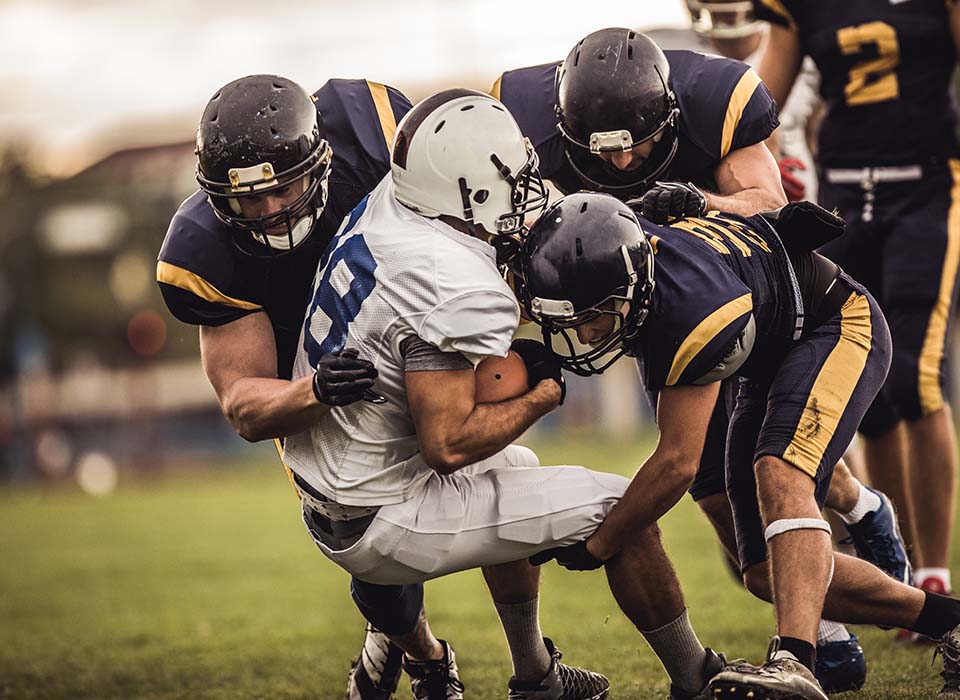As fall begins, football season does too. Regardless of the level of football you play—kids’ leagues, backyard family games, high school or college—the risk of injury is still there. Injuries can be as simple as a sprain, strain and fracture or as severe as injuries to the head resulting in concussions. We have compiled a list of the most common football injuries and ways to prevent and treat them to keep you safe during this football season.
Sprains and Strains
A strain is an injury to the muscles or tendons. The most common symptoms include sudden sharp pain, bruising and swelling. These injuries can usually be healed by resting and icing the affected areas.
A sprain is an injury caused by ligaments in a joint twisting, being overextended or tearing and is most common in ankles or knees. Some symptoms are immediate pain, swelling, bruising and difficulty walking. Usually, a sprain can also be treated with rest, elevation and ice.
Since both strains and sprains are overuse injuries, resting if your muscles are tired is one of the best ways to prevent them. Take time off from running drills or practice if any discomfort arises. Also, make sure to properly warm up and cool down with stretches after practices, lifts or games. If the symptoms persist with either injury, see a doctor.
Fractures
A fracture is a broken bone. It is usually caused by high force impact or stress on the bone. Some common symptoms are pain, swelling and discoloration at the fracture site. These injuries need to be seen by a doctor immediately and can sometimes require surgery. Most commonly they will heal on their own with a cast. The best way to prevent fractures in football is to ensure players are wearing the proper protective equipment including pads and a helmet. Making sure the players are getting the proper nutrients to have healthy bones, including calcium, protein, and magnesium, is another way to help prevent breaks.
Concussions
Concussions, a traumatic brain injury that may occur when a player receives a blow to the head, are some of the most dangerous yet common injuries in football. The easiest way to prevent concussions in football is to ensure all players are wearing properly fitted helmets and to teach them the right way to tackle. Players who tackle with incorrect form may hit their heads or collide with another player’s helmet. Some common symptoms may include a headache, confusion, dizziness and excessive fatigue. Concussions need to be seen by a doctor right away to prevent long term damage.
Shoulder Injuries
The most common shoulder injury is a rotator cuff tear. These injuries are seen mostly in players like the quarterback who are using their arms to throw the ball long distances. Players who experience an arm injury like a rotator cuff tear, will most likely have pain radiating down their arm, see some swelling or even lose function in their arm. At minimum a player will need weeks of rest and physical therapy. Depending on the specifics of the injury, surgery may be needed.

